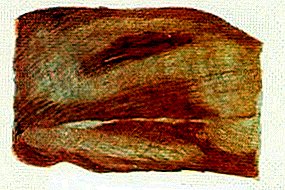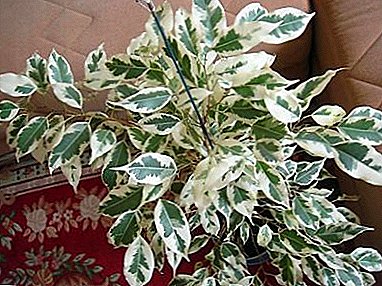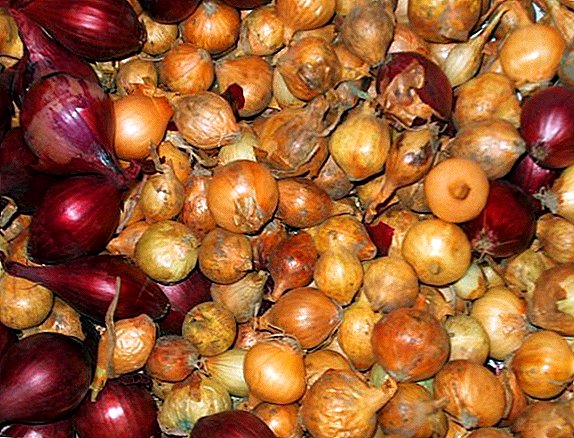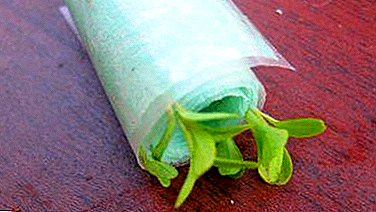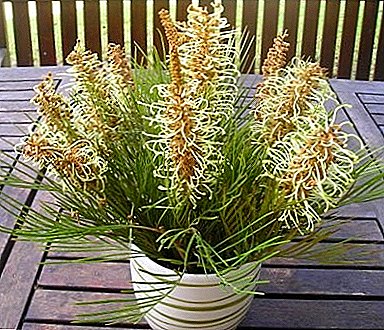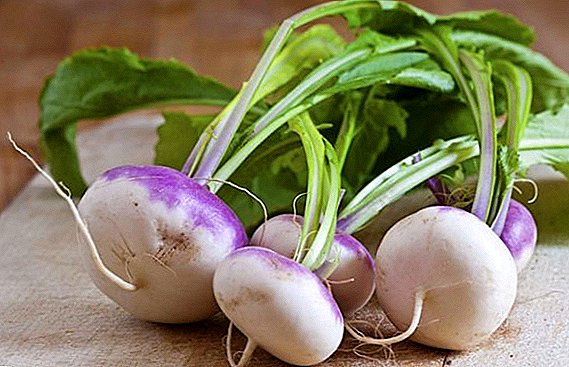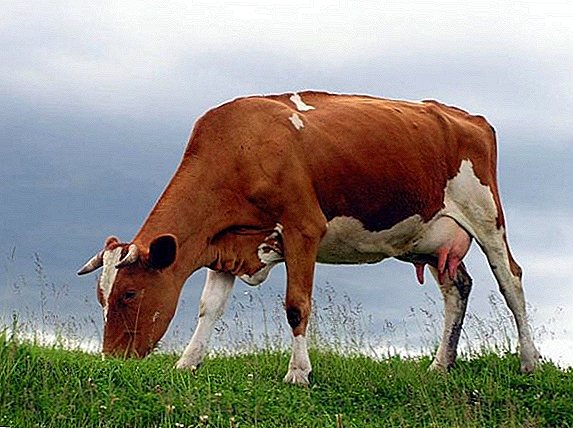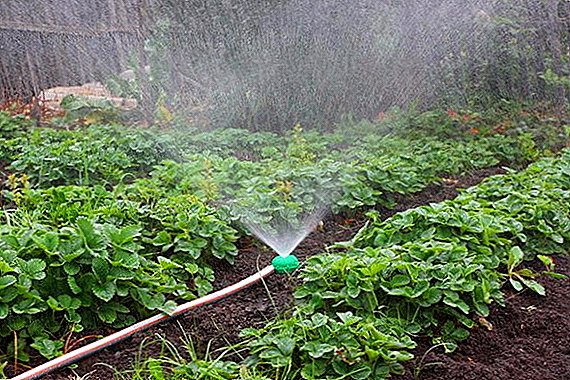 Many owners who grow strawberries annually wonder if it is possible and necessary to water the strawberries, because the berry starts to deteriorate due to an excess of moisture. And if in personal use it is still acceptable, then it is impossible to put on a spoiled berry for sale.
Many owners who grow strawberries annually wonder if it is possible and necessary to water the strawberries, because the berry starts to deteriorate due to an excess of moisture. And if in personal use it is still acceptable, then it is impossible to put on a spoiled berry for sale.
In this article we will figure out when and how to water the crop to get a good crop without fungal diseases.
What water to use for irrigation
Seasoned gardeners know that strawberries should be watered with exceptionally warm water.
The fact is that natural precipitations have the same temperature as the environment, that is, summer rains cannot be cold, so the culture reacts to cold liquid extremely negatively: development is slowed down, as well as the transition to flowering and fruiting. For this reason, irrigate strawberries should be either heated water or rainwater, which is heated in the sun. 
Learn about such strawberry varieties as: "Tristan", "Kama", "Asia", "Albion", "Malvina", "Lord", "Marshal", "Eliana", "Russian Size", "Elizabeth 2", " Gigantella, Kimberly, Queen, Mara de Bois and Clery.
Of course, this feature can be used to slow down the development at a time when it is cold outside, but it is still extremely undesirable to do this, since you can “freeze” the roots of the plant.
You should also understand that if cold rains have passed, then it is better to conduct additional watering of strawberries with warm water so that the plant continues to grow at the same pace. 
Did you know? Allergy is most often caused by pollen, which accumulates on the surface of the berry. To remove it, just wash the strawberries with boiling water in a colander. At the same time, the amount of vitamins and nutritional value will remain unchanged.
How to water after planting
Now let's talk about how to water strawberries after planting.
Strawberries require a lot of moisture for quick rooting, so in the first 2 weeks after planting it needs to be irrigated every other day, adding 10 liters of warm water per square meter.  Before each application of moisture, check the moisture of the lower layers of the soil to know exactly how much water to pour in. To check, we insert an ordinary iron pin to a depth of about 20 cm. If the soil sticks along its entire length, then the amount of water that can be injected can be reduced.
Before each application of moisture, check the moisture of the lower layers of the soil to know exactly how much water to pour in. To check, we insert an ordinary iron pin to a depth of about 20 cm. If the soil sticks along its entire length, then the amount of water that can be injected can be reduced.
Important! The next day after irrigation it is necessary to loosen the soil.
Watering strawberries when grown under black film
If the plant is grown under the film, then we have two options for irrigation: drip irrigation and laying a hose for irrigating strawberries.
The first option involves the construction of a standard drip irrigation system, which will promptly moisten the soil directly below each plant.  The second option is a cheap analogy of the first. We need to take a watering hose, stretch it over one or more beds to measure the exact length. Then one end is tightly closed, and a large number of holes are made along the entire length. Then the hose is buried in the aisle to a depth of about 15 cm.
The second option is a cheap analogy of the first. We need to take a watering hose, stretch it over one or more beds to measure the exact length. Then one end is tightly closed, and a large number of holes are made along the entire length. Then the hose is buried in the aisle to a depth of about 15 cm.
Important! Watering system is carried out before laying the film.
Both the first and second options imply watering strawberries from the container, since the plants need to be supplied with warm water, as we wrote above.
If you have a small planting, then you can water each plant using a watering can. It will differ from ordinary watering only in that it will be necessary to pour water directly under the plant or on it.
Is it possible to water during flowering
Watering strawberries need throughout the growing season, but during flowering watering should be special. Watering strawberries during flowering is done exclusively at the root, so that moisture does not fall on the aboveground part of the plant. It is done so for the reason that the culture during flowering is very vulnerable to fungal diseases, and the wet aerial part will contribute to the development of pathogenic organisms.
For this reason, it is necessary to pour in water either at the root of each bush, or to let it between the rows. It is forbidden to use sprinkling even for the distribution of foliar feeding.  In this case, irrigation is carried out in the morning or in the evening so that the moisture does not evaporate in direct sunlight, thereby cooling the soil.
In this case, irrigation is carried out in the morning or in the evening so that the moisture does not evaporate in direct sunlight, thereby cooling the soil.
Watering strawberries during fruiting
Watering strawberries when fruits form on it can have a negative impact on product quality, so many owners wonder how often plants need to be irrigated during fruiting.
To begin with, strawberries for the most part consist of a liquid that needs to be taken from somewhere. Accordingly, watering strawberries is mandatory during fruiting, but you must follow certain rules so that the berries do not start to rot.
Mulching. After irrigation, moisture from the soil begins to evaporate quickly, especially if the plants are planted in an open area. Accordingly, if you reduce the evaporation of moisture, then the number of irrigations is reduced. Mulch will help us retain moisture in the soil, as well as protect the substrate from possible night cooling. Mulch can be laid in the form of straw, hay or pine needles. Any option will have all the necessary functions. 
Important! During fruiting water consumption is 20-25 liters per square.
Proper application of moisture. If during flowering a culture may be affected by a fungus, then during fruiting, and even more so. Water the plants need plenty of water to saturate the lower layers of the soil, while you need to make sure that the berry remains dry. In this case, it is best to use drip irrigation or, as mentioned above, prikopat hose with a large number of holes in the aisle. Such options allow the culture to give the required amount of moisture and not to wet the above-ground part and the fruit.
Strawberries can be grown in different ways, for example: in the open field, in greenhouses, in vertical beds, pyramid beds, at home and using hydroponics.
When watered after harvest
Now let’s see if strawberries are watered after harvesting.
It would seem that we removed the fruits, you can forget about watering, but everything is not so simple. Plants, though lost their fruits, which require a large amount of moisture, but still grow and develop, as well as preparing for the cold.
Leaving strawberries without watering after harvest, hoping for rain, you can not, because you can destroy the plants. To avoid this, you should pour the same amount of water, but less. The plant after the end of the fruiting period does not like frequent application of moisture, but 2-3 irrigations a week with the introduction of 15-20 liters of moisture will be pleased.
It should be remembered that the soil moisture should be kept about 60% between irrigations. In this case, the plant will not suffer from a lack of moisture and will be able to prepare for the cold.
Did you know? Strawberry is a natural aphrodisiac, which affects men and women equally well. In this case, the berry does not affect the production of hormones or the nervous system.
Watering strawberries: methods
After planting strawberries, a dilemma arises in terms of which watering is best to choose. Next, we consider the most current methods of irrigation of strawberries, which are used both in small plots and not in whole "plantations".
Garden watering can
The easiest and most laborious variant of irrigation is planting, which can be used only for watering small strawberry plantations.
The advantages include water saving and proper distribution of moisture for each plant. By cons - serious physical exertion, which will not allow you to use this method for watering more than 1 hectare of strawberry. 
Hose
The most popular method, since it does not require much effort. Using a hose, you can water any area, up to hundreds of hectares. However, there are also disadvantages, and they are significant:
- Moisture is unevenly distributed, which leads to waterlogging of some plants and lack of moisture in others.
- Strong pressure can erode the earth, thus exposing strawberry roots.
- Large water consumption, which will result in considerable financial costs.
- When watering with a hose, some part of the moisture still gets to the above-ground part of the plants, so the method cannot be used during flowering and fruiting.
Drip
Drip irrigation is an ideal option for introducing moisture, which allows not only to evenly moisten the soil under each crop, but also to achieve early harvest (the soil temperature rises). However, using such a system to irrigate several dozen hectares of planting is very, very costly, since the entire drip irrigation system will pay off only after a few years, respectively, the first time you will work in minus. And if the products do not go for sale, but only for personal use, then profitability is out of the question. It is also worth remembering that drip irrigation cannot be used in areas located on the slopes, for obvious reasons.
Of course, drip irrigation has many advantages, especially related to the fact that you will reduce water consumption, but at the same time the plants will get their rate of moisture. But the cost of the system itself does not allow the method to become popular.
Sprinkling
A good option for watering large plantings, as it allows you to cover a large area with one sprinkler, however, as mentioned above, this option is useless during flowering and fruiting, as it strongly overmoistens the soil.  It turns out that sprinkling is good to use at the initial stage, when only greens appear. However, then you will need to carry out watering by another method that will not wet the leaves, flowers and fruits of strawberries.
It turns out that sprinkling is good to use at the initial stage, when only greens appear. However, then you will need to carry out watering by another method that will not wet the leaves, flowers and fruits of strawberries.
These are the features of crop irrigation at various stages of growth and development. It is worth remembering that the berry does not like the frequent and insignificant introduction of water, so much is better and rarely than little and often. This rule will help grow a large number of delicious healthy products that will have an excellent taste and smell.


